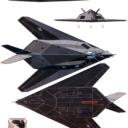Yahoo Answers is shutting down on May 4th, 2021 (Eastern Time) and beginning April 20th, 2021 (Eastern Time) the Yahoo Answers website will be in read-only mode. There will be no changes to other Yahoo properties or services, or your Yahoo account. You can find more information about the Yahoo Answers shutdown and how to download your data on this help page.
Trending News
Pilots, how often do you see a failure in one of your primary flight instruments?
Once in a career?....more often? Do they tend to be soft failures or obvious hard faults? Just wondering.
All good answers, so I'll have to let the voters judge. Thanks all !
7 Answers
- USAFisnumber1Lv 78 years agoFavorite Answer
LOL. The two basis instruments I see on prop planes and copters is a turn and slip indicator which is nothing but a ball bearing inside a curved glass tube and a piece of yarn taped to the windscreen outside the vehicle. Pretty hard for them to break.
- 8 years ago
Got a wide variety of answers here. Primarily it all depends on the quality of the instruments in the aircraft and the environment where the aircraft is flown. Most of my failures have been of the airspeed indicator and that is almost always due to a broken pitot line or a stopped-up pitot tube and not an internal problem with the instrument itself. I had stopped up pitot tube on a Cessna 172 just the other day. A bug flew right into it on takeoff. Airspeed got up to 55kts and then dropped to ZERO!
I guess I've had malfunctions of every primary flight instrument there is at one time or another. Most of the problems have been caused by insect nests in pitot or static lines. Some have been caused by crappy repaired or overhauled units.
Lots of operators use cheaply overhauled instruments that are of marginal quality and these will fail quite often. This happens more and more as airplanes age. Had one airspeed that was calibrated wrong on a flight school airplane. That was scary! Operators that use good quality overhauled or new instruments will have very few failures but they had better take up robbing banks to pay for them.
I don't consider gyros as primary flight instruments unless the airplane is operating IFR. Vacuum or pressure gyros usually don't just "drop dead", so to speak, unless the vacuum or pressure pump fails or the venturi gets stopped up. That's not an instrument failure but an air pump or venturi failure. When they fail they start "precessing"- that is turning around slowly. When they do that it's time to overhaul them. Electric gyros are more prone to "sudden death" than vacuum or pressure types.
So, to answer your question- yes, instrument failures happen more often than you might think in some arenas. Usually with pitot-static instruments it's pretty much a hard fault but with vacuum gyros, it can be a "softer" failure.
- Mildred's peopleLv 58 years ago
I haven't once seen a primary instrument failure, or even anomaly, in any of our Citation aircraft in my nine years at the company. Neither have any of the other pilots that I know of. I did have a hung APU start out on the ramp down in Van Nuys two summers ago... put it out of service, and a very hot cabin until we got our engines running.
Before I was a Citation pilot, I had a runaway electric pitch trim on the landing flare in a Turbo Commander, which scared the sht out of me. Then a total engine failure in a C-182 at 1500 AGL... still feel lucky I was over rural ground... farmers fields are a beautiful sight.
And before that, flying 206s, 207s, and 210s serving the islands of Puget Sound, NONE of the gyro instruments were reliable, and none of us trusted them. That's because we regularly landed on a few strips that were so rough you felt like your ribs got rattled up and down after you parked the plane. You can imagine what all that jolting did to the gyros. So watching an ADI freeze or a D.G. slip was regular business on any given day, until they got around to being repaired or replaced, which was much less often than each 100 hour inspection. Didn't matter, as we were a VFR only operation.
The only pitot static trouble I've had was again in the Commander, flying through a layer of stratus in the winter. But it was the pitot heat system that failed, and not the p/s system or instruments. As for "primary" power instruments, I have seen faulty readings on both King Air and Casa 212 instrument clusters, one resulting from a bad FCU and another one from something in the ignition circuit. We were ramp testing them with the A&Ps and I remember the EGT and N2 RPMs bouncing up and down ever so slightly. Definitely enough to ground the airplane though.
In short, I've had more "other" systems failures than instrument failures.
Source(s): commercial pilot since 1994, corporate pilot since 2000. - mawduce65Lv 68 years ago
Almost never. I'm not a career pilot just a private but I had an transponder "failure". But I think this was the controller at the local air force base messing with me. He told me it was cold and needed to warm up. The damn thing has no engine. We laughed.
- How do you think about the answers? You can sign in to vote the answer.
- 8 years ago
At least once every 6 months to a year in one or more primary instruments. Both types of failures. Those are the hazards of flying older aircraft. Even in new aircraft I've had problems. Systems are fallable for a number of reasons, which is why we train for such emergencies.
- 8 years ago
I've had 1 failure in 9 years of flying. Lost my airspeed indicator in a 172.
- 0NE TRlCK P0NYLv 78 years ago
Been flying for over forty years with friends ( I have no license ) and have never lost a flight instrument except for a suction mounted compass that fell off once and hit my knee.







